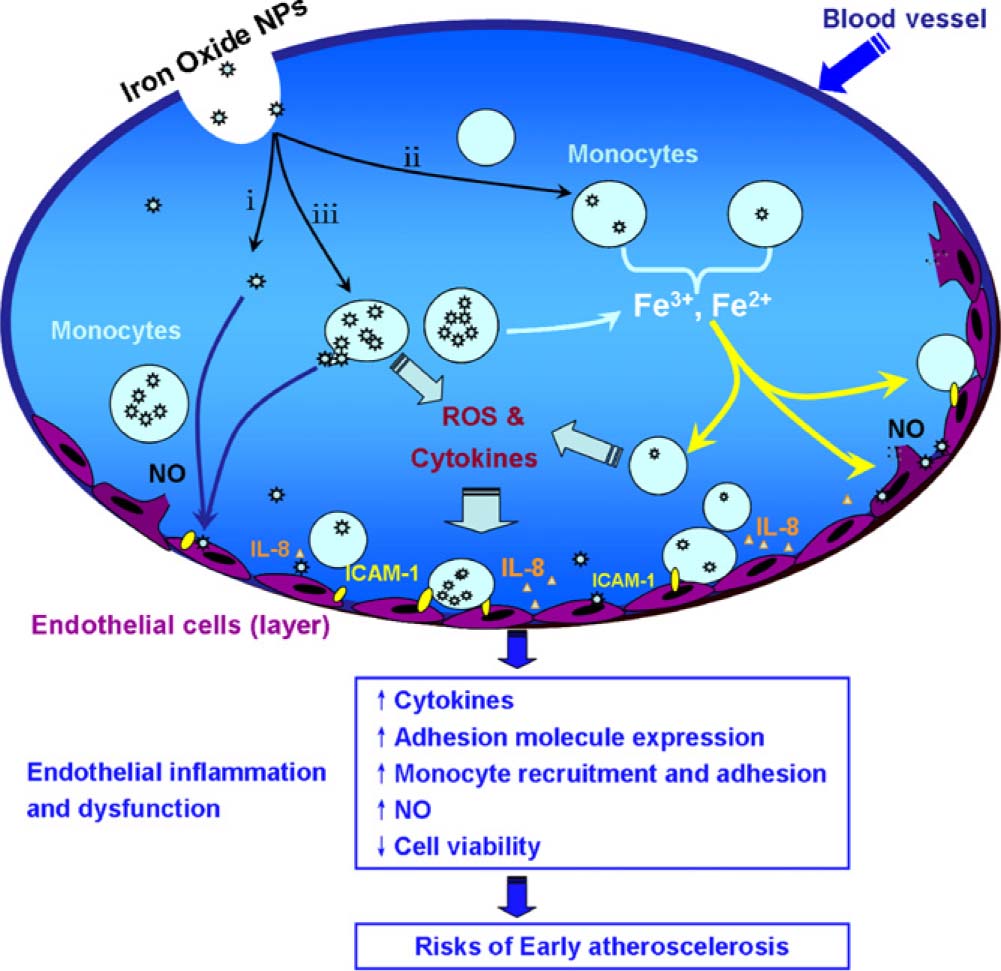More recently, the correlation between exposure to nanoparticles and cardiovascular diseases is of particular concern in nanotoxicology related fields. Nanoparticle-triggered endothelial dysfunction is hypothesized to be a dominant mechanism in the development of the diseases. To test this hypothesis, iron oxide nanoparticles (Fe2O3 and Fe3O4), as two widely used nanomaterials and the main metallic components in particulate matter, were selected to assess their potential risks on human endothelial system. The direct effects of iron oxide nanoparticles on human aortic endothelial cells (HAECs) and the possible effects mediated by monocyte (U937 cells) phagocytosis and activation were investigated. In the study, HAECs and U937 cells were exposed to 2, 20, 100_g/mL of 22-nm-Fe2O3 and 43-nm- Fe3O4 particles. Our results indicate that cytoplasmic vacuolation, mitochondrial swelling and cell death were induced in HAEC. A significant increase in nitric oxide (NO) production was induced which coincided with the elevation of nitric oxide synthase (NOS) activity in HAECs. Adhesion of monocytes to the HAECs was significantly enhanced as a consequence of the up-regulation of intracellular cell adhesion molecule-1 (ICAM-1) and interleukin-8 (IL-8) expression, all of which are considered as early steps of atheroscelerosis. Phagocytosis and dissolution of nanoparticles by monocytes were found to simultaneously provoke oxidative stress and mediate severe endothelial toxicity. We conclude that intravascular iron oxide nanoparticles may induce endothelial system inflammation and dysfunction by three ways: (1) nanoparticles may escape from phagocytosis that interact directly with the endothelial monolayer; (2) nanoparticles are phagocytized by monocytes and then dissolved, thus impact the endothelial cells as free iron ions; or (3) nanoparticles are phagocytized by monocytes to provoke oxidative stress responses.

(Zhu, M. T.; Wang, B.; Wang, Y.; Yuan, L.; Wang, H. J.; Wang, M.; Ouyang, H.; Chai, Z. F.; Feng, W. Y.; Zhao, Y. L., Endothelial dysfunction and inflammation induced by iron oxide nanoparticle exposure: Risk factors for early atherosclerosis. Toxicol. Lett. 2011 203 (2), 162-171. )

